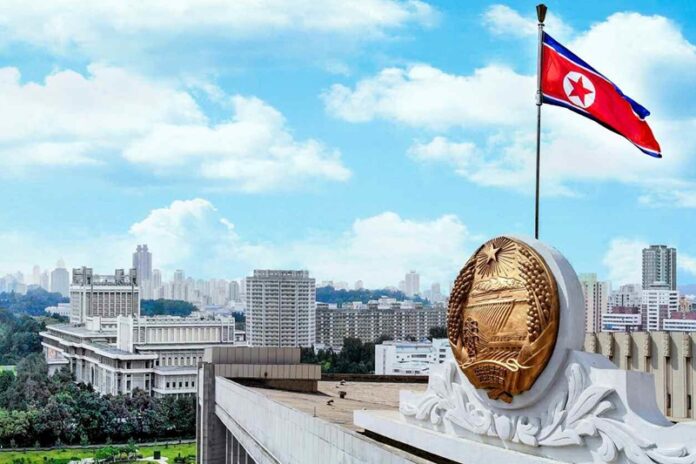Analysis of North Korean propaganda in the West tends to fall into the same pitfalls as analysis of North Korea itself, which includes that assumptions of “craziness” or “randomness” are considered a sufficient enough explanation for a specific action or pattern of actions.
In reality, to this analyst of propaganda and disinformation, North Korean propaganda has one stand-out element that is clearly calculated. This element is often overlooked in discussions of the country.
Certainly North Korean propagandists are aware that their propaganda is being consumed by an outside audience around the globe, and is broadcast through global newspapers and TV stations in the West and in the developing world.
Scholars who discuss North Korean propaganda frequently point to the fact that a common aspect of North Korean propaganda is cultural propaganda that claims there is prosperity in the country.
Prosperity is established through a focus on development projects, or the country’s success in establishing literacy and other signs of development despite crippling poverty.
This sometimes includes claims meant to be seen by an outside audience quite openly, such as claims that there would be greater prosperity for South Korea if it joined North Korea in a united Korean peninsula.
But often this appears to be inward-directed propaganda featuring images that show North Korea as a prosperous and developed state.
As the Washington Post points out, North Korean propagandists are often misread in Western media as hysterical and foaming at the mouth with “passions” when in reality they are often sticking to a script and some of the more eccentric or aggressive wording is simply copied from previous texts.
This proves there is in fact a system for North Korean propaganda, and it is not simply the poorly supervised ramblings of corrupt bureaucrats, or the overly supervised mutterings of a dictator’s goons.
What if in fact it is the outside world that is the target for North Korean propaganda’s push to establish prosperity?
One of the most striking things about speaking with people firsthand who have visited North Korea is their stories of the poverty there, such as the country’s collapsing medical system and a population showing visible signs of food shortages. Hardly a strong position for North Korea to be in diplomatically in its dealings with the rest of the world.
A deeply isolated state, North Korea still has diplomatic relations worldwide, including embassies in far flung countries where the country can negotiate relief from its diplomatic and economic crisis.
Perhaps it should be unsurprising that an outsider to North Korean politics finds themselves surprised at the extent of the country’s poverty. Simply put, the propaganda worked. North Korea has hoodwinked the world into thinking it is more prosperous and more developed than it is, cleverly using to its advantage a global media eager to show the exotic images of a developed and stable country living such an otherworldly and bizarre existence.
Perhaps the answer to countering North Korean propaganda is removing the mystique fostered by a media vision of a country where people live just like we do, but just in 1984-like totalitarianism. Perhaps the answer to negotiating an end to North Korea’s isolation lies in working with the country based on its more immediate needs, such as development, agriculture and medicine.
In a sense, the global community is letting the regime off the hook for starving its own population while their counterparts to the South live in a successful and affluent state whose cultural Soft Power captures the global imagination. This can be avoided by centering the poverty of North Korea in coverage of the country. Instead the media is accidentally parroting Pyongyang’s line that the country is merely showing reliance in the face of hostile sanctions.
This truth is both what the media owes the people of North Korea, but also what the media owes recipients of the North Korean propaganda that they are sharing.
Edited by Robert Lauler.





















